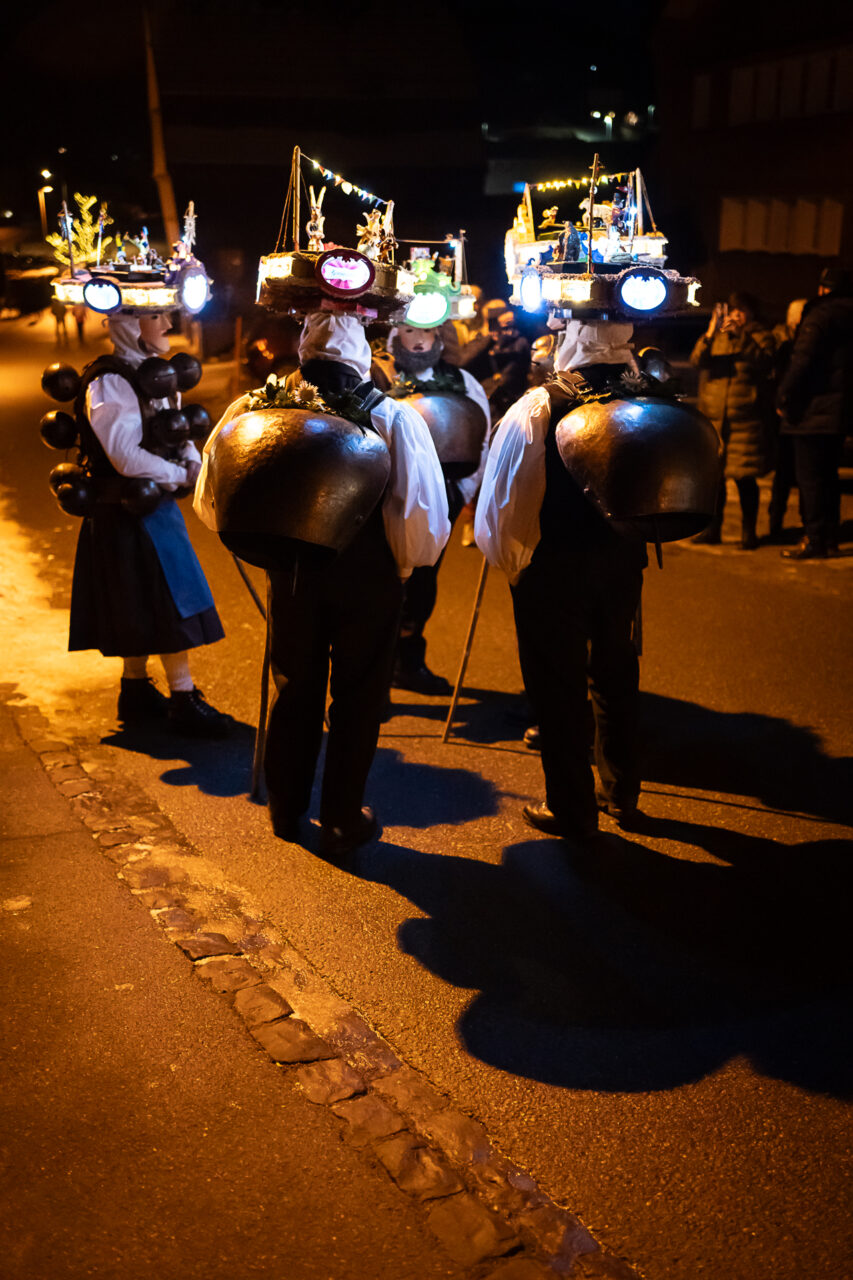«Silvesterchläuse from Urnäsch (Switzerland) – Where the new year
begins twice
Here, New Year’s Eve is celebrated in a special way, and twice at that. On the «new» date, December 31, and on the «old» date on January 13. The tradition of Silvesterchlausen (bellringing and «zaure») on December 31 is practiced in many villages in the region but mainly in Urnäsch do they celebrate it again on January 13. The date goes back to a dispute at the end of the 16th century when the Protestants of Ausserrhoden refused to recognize Pope Gregory’s new calendar. For many local people, the former New Year’s Eve, according to the Julian calendar January l3th, is still the most important day in the year. A magical feeling floats through the air, especially if the countryside is still covered by snow. The whole valley resounds to the primeval rhythm of the bells and the men’s voices.
«Rolle, Schelle, Zaure»
From early morning to way past midnight the «Chläuse» wander around, ringing their special bells. They stop mainly at isolated farmhouses and in places where they know they will be welcomed with joy. When they arrive, they stand in a circle and ring their bells in a special ritual. Once greeted by the inhabitants, the «Chläuse» begin singing a «Zäuerli». Mostly, the «Chläuse» recieve money and a drink, usually «Glühwein». In the evening the «Chläuse» visit the restaurants in the village, all packed with local people and tourists who come from far and wide to enjoy this unique experience.
The various «Chläuse»
The «Schöne» (the “Beautiful”)
«Chläuse» wear colorful velvet clothes. The «Rollis» wear dresses, a lacy apron, white gloves, and a smiling woman’s mask. The «Schellenchläuse» carry big cow bells, one on their chests and one on their backs. The spectacular headdresses worn by «Rolli»and the square hats of the «Schellenchläuse», decorated with thousands of coloredglass beads, are well-known. They represent miniaturized scenes from country life:
A farmer at work, going up to the alps in summer, different trades, or customs. The wooden figurines are carefully carved and painted.
The «Schö-Wüeschte» (the “Beautiful-Ugly”)
They find the material for their outfits in nature. Pine branches, holly, silver thistles, moss, etc. Their capes are created with care and decorated with pinecones, acorns, and bark. Their headdresses are decorated with country scenes.
The «Wüeschte» (the “Ugly”)
They embody the demonic and primeval. With their wild masks made of animalteeth, horns, and bones, they look frightening. Their capes are shaggy–covered thickly with hay, straw, holly, pine branches, dead leaves, or other natural materials. They remind us of a long-gone time when people tried to scare away demons by wearing fearsome outfits and making terrible noises.
Origins unknown
The exact origin of the «Silvesterchläuse» is unknown. For many years different groups wanted to forbid the custom because it had taken on wild-chaotic forms. But now «Chlausen» has become a valued cultural asset which fascinates people far and wide. This interest has inspired the publication of various books and films on the subject.»
Origin: Appenzeller Brauchtumsmuseum Urnäsch, Dorfplatz 6, 9107 Urnäsch, Text Esther Ferrari














